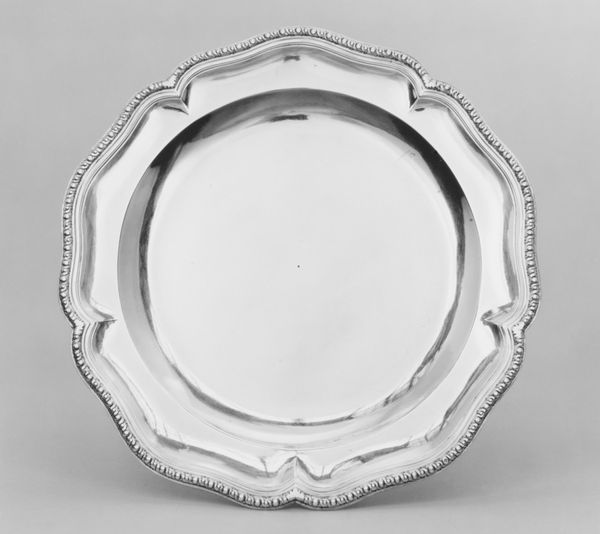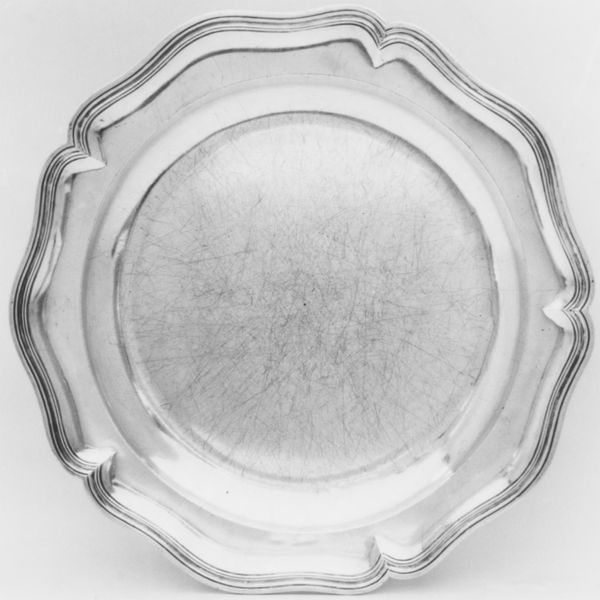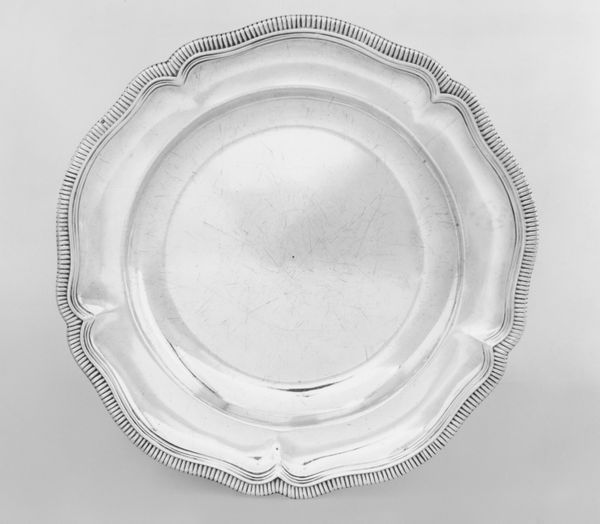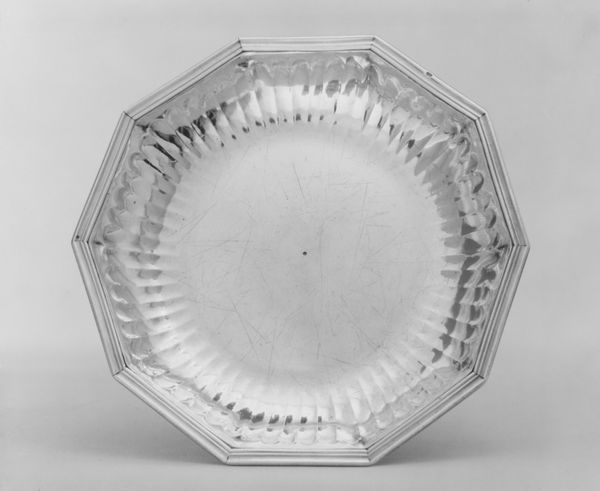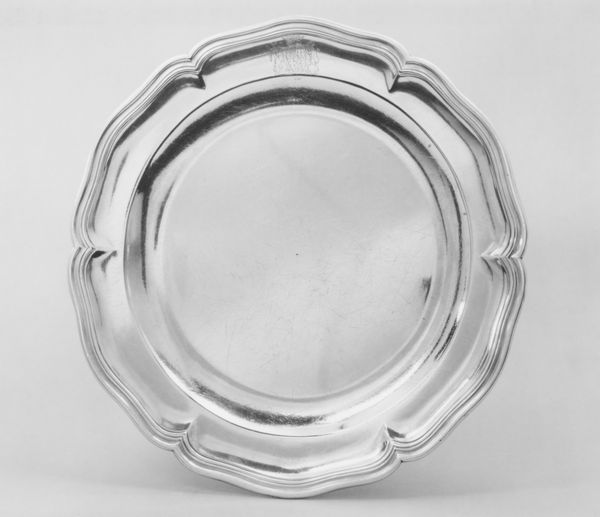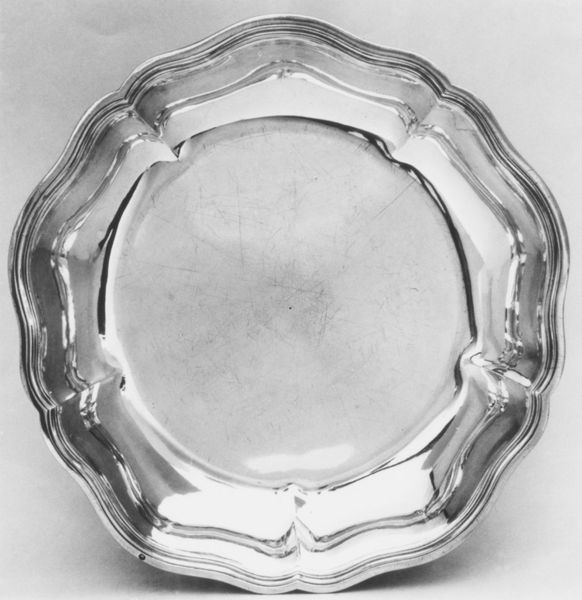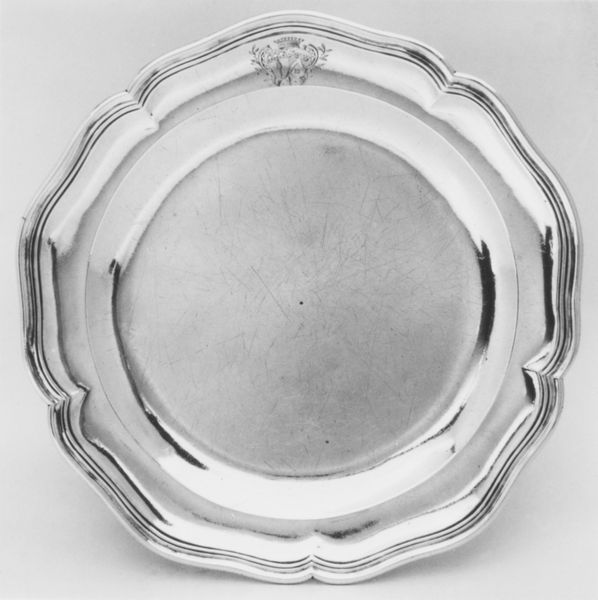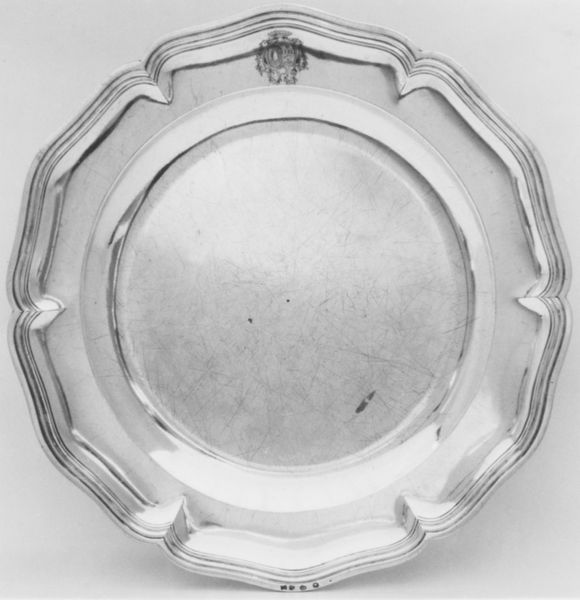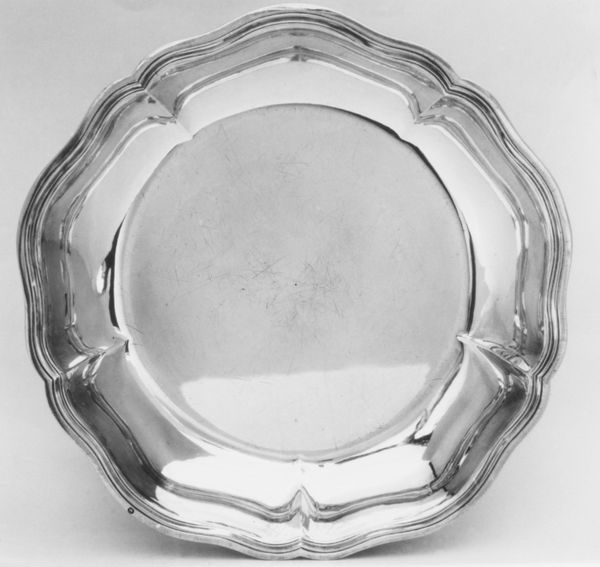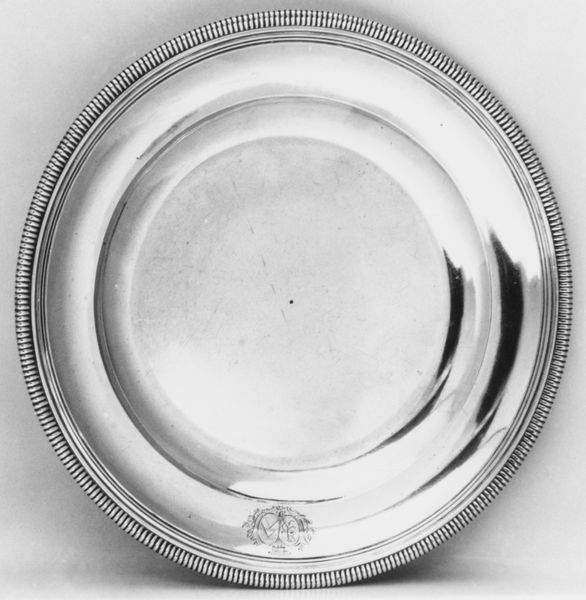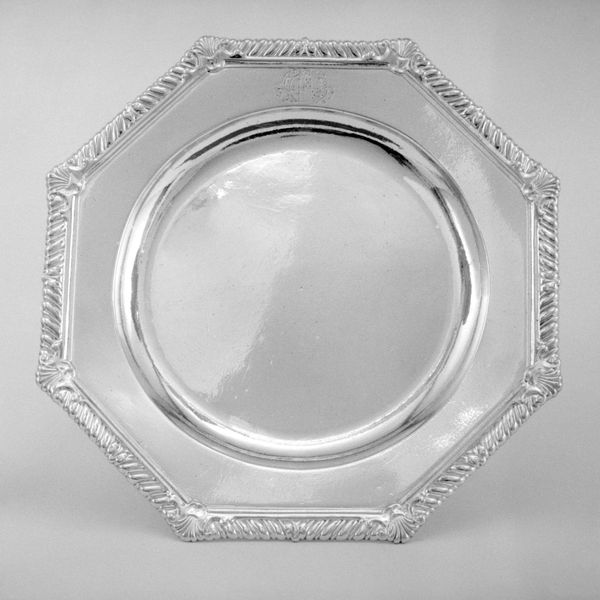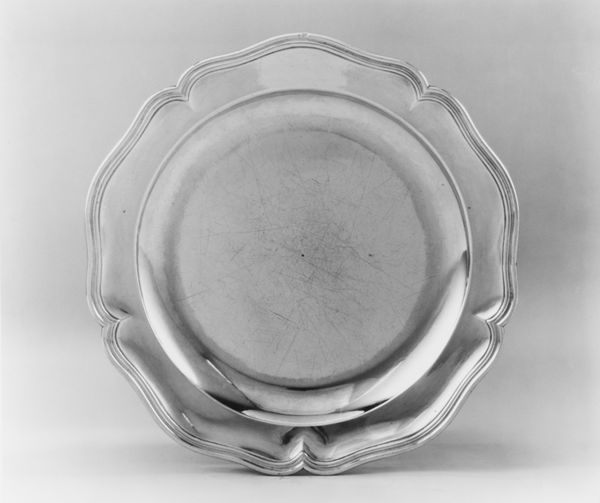
silver, sculpture
#
decorative element
#
silver
#
baroque
#
sculpture
#
decorative-art
Dimensions: Overall: 1/2 × 10 7/8 in. (1.3 × 27.6 cm)
Copyright: Public Domain
Curator: Looking at this piece, the "Salver," likely created between 1745 and 1755, immediately strikes me with its serene elegance. The simplicity is deceiving, wouldn’t you say? Editor: It certainly has an understated refinement, but to me, the sheer emptiness is…almost unsettling. All that polished silver reflects an absence. I wonder about its original context, who commissioned such an object, and what power dynamics were at play in its display. Curator: Right. Made of silver, these salvers were incredibly popular throughout the 18th century, not just for aesthetic pleasure but also as crucial items in displaying one's wealth and taste during social events. Imagine this gleaming on a table, filled with exotic fruits or delicate pastries, acting as a focal point for elite conversations. Editor: So, it becomes a stage for conspicuous consumption. A silent performance of social status, really. Was this 'performance' accessible, who did it exclude or erase? Curator: Absolutely. Silver, at that time, was not just a material; it was a declaration. The craftsmanship, typical of the Baroque style, shows the affluence that allowed for such ornate and labor-intensive work. Though "Salver" appears minimal today, its elaborate edging detail suggests how much significance was invested into its look as much as function. Editor: And that detail, I suppose, speaks to a certain aesthetic ideology. Who decides what's considered beautiful and worthy of display? The "Salver" prompts questions about the colonial context too. Where did the silver originate? Who extracted it, and under what conditions? Objects like these become evidence of a much larger, often exploitative, economic system. Curator: An astute point, as always! While beautiful on its own, you are right to bring up the history of silver during the Colonial Era, we cannot separate our appreciation of the salver from the labor and circumstances that were sacrificed for the comfort of aristocrats. Now that is a question that makes the history come alive. Editor: Indeed. I can never look at such an item of luxurious living again without reflecting on where such items originate. Perhaps a key role of art today, is to ask us those questions that give it a further dimension, than being merely aesthetically pleasing.
Comments
No comments
Be the first to comment and join the conversation on the ultimate creative platform.
